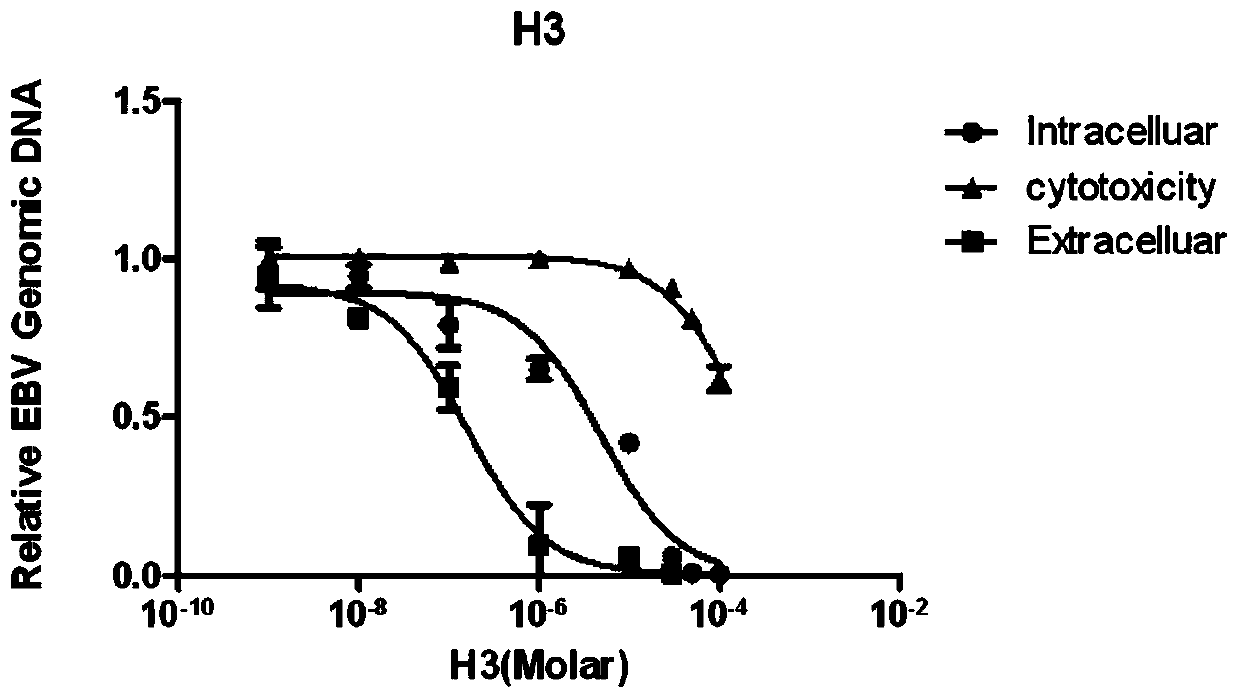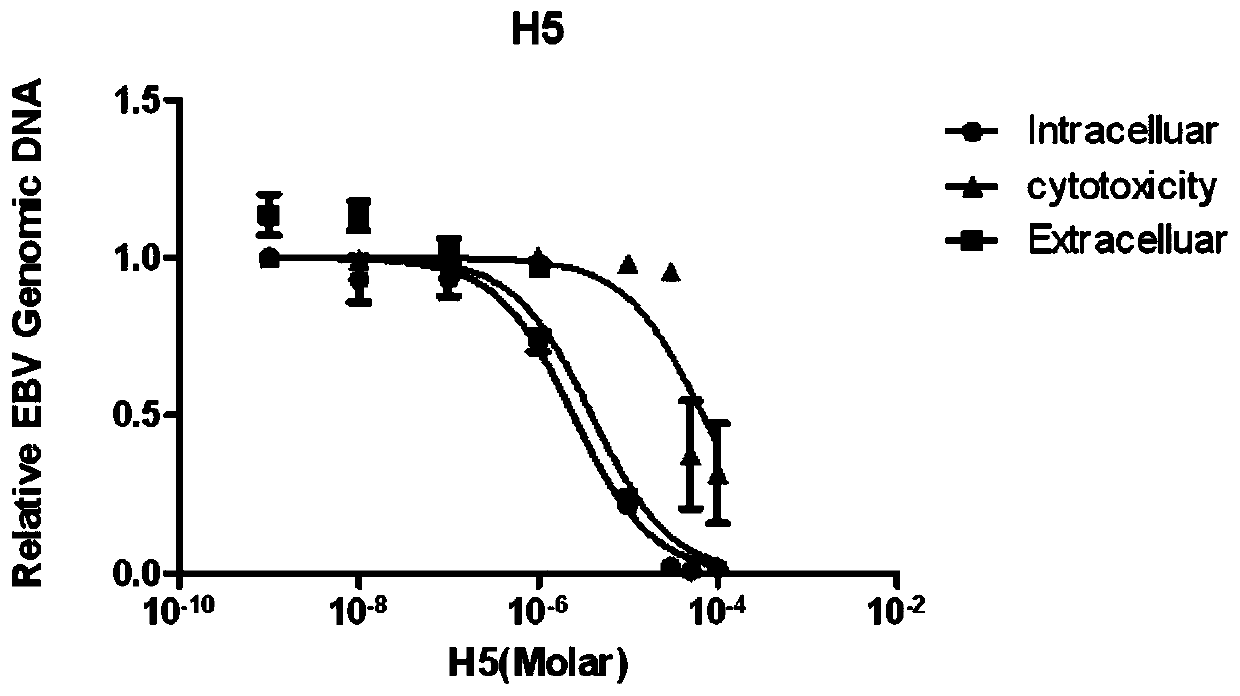Application of 2-furan acrolein compounds in the preparation of anti-human gamma herpes virus drugs
A furan acrolein and compound technology, which is applied in the directions of antiviral agents, antitumor drugs, and drug combinations, can solve the problems of single drug type, obvious toxic and side effects, and weakened curative effects, and achieves increased lethality, reduced morbidity, and improved The effect of immunity
- Summary
- Abstract
- Description
- Claims
- Application Information
AI Technical Summary
Problems solved by technology
Method used
Image
Examples
Embodiment 1
[0048] Compound screening, the steps are as follows:
[0049] 1. Compound library preprocessing: The virtual screening compound library is a self-prepared compound database. The compound database is processed as follows: removing ions and complexing water molecules, adding charges, protonating, and generating three-dimensional conformations. These processes were completed in the drug design software package Discovery Studio 3.0. Wherein the protonation is carried out under the condition of pH 6.5-8.5. Prepare small molecule libraries for virtual screening.
[0050] 2. Searching the database for substructure matching based on the structure of 2-furan acrolein to find out the compound containing the parent nucleus. Finally, 26 compounds were selected for cytological experiments.
Embodiment 2
[0052] KSHV, EBV cleavage replication inhibitory activity assay, the specific steps are as follows:
[0053] 1. Cell culture: BCBL-1 (latent KSHV infected cell line) and P3HR-1 cells (EBV latent infected cell line) were cultured in vitro. The RPMI 1640 medium containing 10% fetal bovine serum was used for routine maintenance and passage at 37°C and 5% carbon dioxide concentration.
[0054] 2. Drug intervention: adjust the logarithmic growth phase so that the cell density of BCBL-1 (KSHV positive cells) and P3HR-1 (EBV positive cells) is 3×10 5 cells / ml, use 20ng / mL TPA+0.3mM butyrate for induction treatment to induce the virus in the cells to enter the lytic replication phase. After the cells were treated with the inducer for 3 hours, the cells were treated with different concentrations of compounds (C10, H1-H25), and three parallel wells were set up for each concentration, and a control group without TPA induction and without compound treatment was set up. Compare.
[0055...
Embodiment 3
[0060] Embodiment 3 suppresses KSHV, EBV virus particle release experiment
[0061] 1. Cell culture: BCBL-1 cells were cultured in vitro. RPMI 1640 medium containing 10% fetal bovine serum, 100 U / ml penicillin, and 100 μg / ml streptomycin was used for routine maintenance and passage at 37° C. and 5% carbon dioxide concentration.
[0062] 2. Drug intervention: adjust the density of BCBL-1 cells in the logarithmic growth phase to 3×10 5 cells / ml, use 20ng / mlTPA to induce BCBL-1 cells to enter the lytic replication phase. The compounds to be tested were prepared in different concentrations using DMSO. After BCBL-1 cells were treated with TPA for 3 hours, the cells were treated with different concentrations of compounds (C10, H1~H25), and three parallel wells were set up for each concentration, and no compound treatment and no TPA-induced controls were set up. group for comparison.
[0063] 3. Test method: After the cells were induced by TPA for 5 days, the cell culture solutio...
PUM
 Login to View More
Login to View More Abstract
Description
Claims
Application Information
 Login to View More
Login to View More - R&D
- Intellectual Property
- Life Sciences
- Materials
- Tech Scout
- Unparalleled Data Quality
- Higher Quality Content
- 60% Fewer Hallucinations
Browse by: Latest US Patents, China's latest patents, Technical Efficacy Thesaurus, Application Domain, Technology Topic, Popular Technical Reports.
© 2025 PatSnap. All rights reserved.Legal|Privacy policy|Modern Slavery Act Transparency Statement|Sitemap|About US| Contact US: help@patsnap.com



